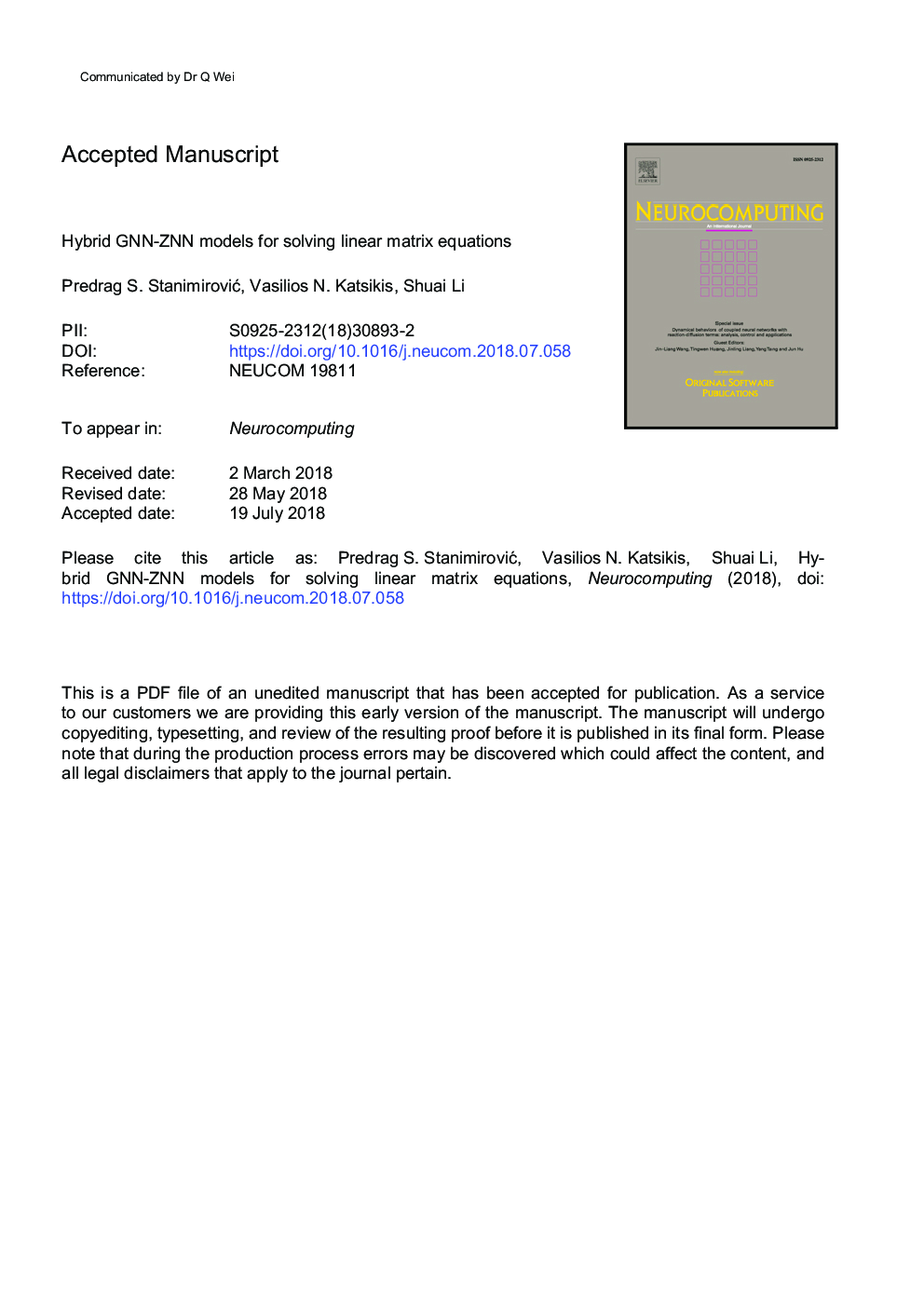| Article ID | Journal | Published Year | Pages | File Type |
|---|---|---|---|---|
| 8965168 | Neurocomputing | 2018 | 28 Pages |
Abstract
New dynamical models for solving the matrix equations BX=D and XC=D are developed in time-invariant case. These models are derived as a combination of GNN and ZNN models. They do not posses GNN dynamic due to their implicit dynamics. Formally observed, they can be derived by multiplying the right hand side in the ZNN dynamics by an appropriate symmetric positive definite matrix which improves the convergence rate. For this purpose, these models are termed as HZNN. The convergence of HZNN models is global and exponential. Also, the convergence rate of HZNN models is superior with respect to the convergence rate of the classical GNN model as well as with respect to ZNN models in time-invariant case. Capability of the HZNN models to overcome unavoidable implementation noises is considered theoretically and numerically. The Matlab implementation of HZNN models is proposed and used in numerical experiments for solving matrix equations and computing various appearances of outer inverses with prescribed range and null space.
Keywords
Related Topics
Physical Sciences and Engineering
Computer Science
Artificial Intelligence
Authors
Predrag S. StanimiroviÄ, Vasilios N. Katsikis, Shuai Li,
